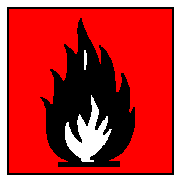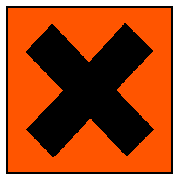International Chemical Safety Cards
| METHYL ETHYL KETONE | ICSC: 0179 |
METHYL ETHYL KETONE |
 |
 |
| TYPES OF HAZARD/ EXPOSURE |
ACUTE HAZARDS/ SYMPTOMS |
PREVENTION | FIRST AID/ FIRE FIGHTING |
| FIRE | Highly flammable. |
NO open flames, NO sparks, and
NO smoking. |
Powder, AFFF, foam, carbon
dioxide. |
| EXPLOSION | Vapour/air mixtures are
explosive. |
Closed system, ventilation,
explosion-proof electrical equipment and lighting. Do NOT use compressed air for filling,
discharging, or handling. Use non-sparking handtools. |
In case of fire: keep drums,
etc., cool by spraying with water. |
| EXPOSURE | |
|
|
| INHALATION | Cough. Dizziness. Dullness.
Headache. Nausea. Shortness of breath. Unconsciousness. Vomiting. |
Ventilation, local exhaust, or
breathing protection. |
Fresh air, rest. Refer for
medical attention. |
| SKIN | MAY BE ABSORBED! Redness. |
Protective gloves. Protective
clothing. |
Remove contaminated clothes.
Rinse skin with plenty of water or shower. |
| EYES | Redness. Pain. |
Face shield or eye protection in
combination with breathing protection. |
First rinse with plenty of water
for several minutes (remove contact lenses if easily possible), then take to a doctor. |
| INGESTION | Abdominal cramps. Confusion
(further see Inhalation). |
Do not eat, drink, or smoke
during work. |
Rinse mouth. Give plenty of
water to drink. Refer for medical attention. |
| SPILLAGE DISPOSAL | STORAGE | PACKAGING & LABELLING | ||
| Collect leaking and spilled
liquid in sealable containers as far as possible. Absorb remaining liquid in sand or inert
absorbent and remove to safe place. Do NOT wash away into sewer (extra personal
protection: self-contained breathing apparatus). |
Fireproof. Separated from strong
oxidants, strong acids. Cool. Well closed. |
F symbol Xi symbol R: 11-36/37 S: 9-16-25-33 UN Haz Class: 3 UN Pack Group: II |
||
| SEE IMPORTANT INFORMATION ON BACK | ||||
|
||||